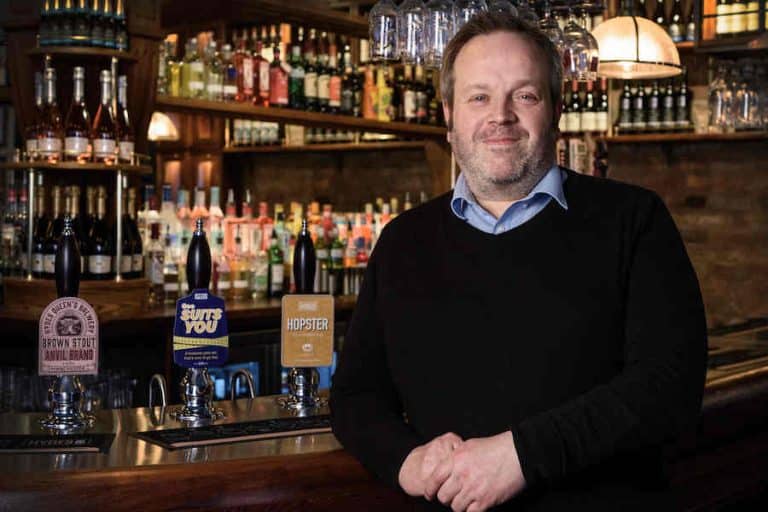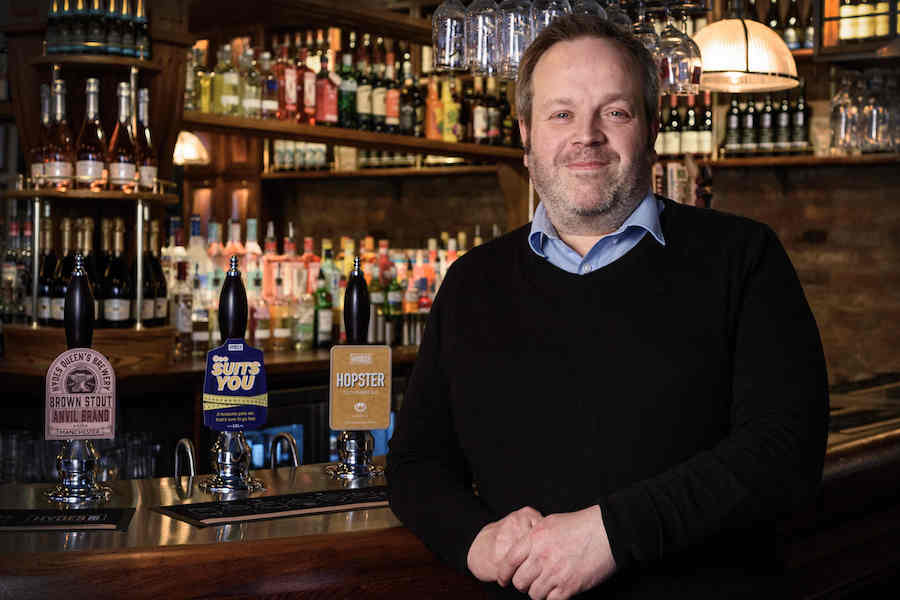This new business is transforming Manchester’s gig economy for both restaurants and freelancers
- Written by I Love MCR
- Last updated 4 years ago
- Business, Food & Drink, Sponsored

John Ryan started Gigable with the hope of creating a space that makes it easy for businesses to engage contract workers for short-term work in a simple and user-friendly way.
The platform has already reached over 20,000 members and is aiming to disrupt the gig economy here in a way that works for both business and freelancers.
“It sounds like something that’s been done a million times before, but it hasn’t been done properly before,” says John.
“And it hasn’t been done in a way that works for both sides – both for the restaurant and the freelance drivers.”
There isn’t usually a lot of transparency in the gig economy, says John. But Gigable is different.
“When a business posts a gig in the app, they lay out where it’s on, the dates and times, and what the rates of pay are – so the drivers have a good idea what their night’s pay will be, which you just don’t get with other platforms.
“And everyone also has a rated identity in the platform. So every time a freelancer does a job with them they get rated by the freelancer, and the freelancer also gets a rating from the business.
“One of our core values is that transparency.”

While there are other freelancer platforms, often creative ones, there aren’t so many operating in the delivery space, says John.
“Plus, we are quite unique. We are quite happy to work with restaurants who are on Deliveroo or Just Eat, who have their own branded apps and accept orders over the phone.
“But they just want control over their own costs and their own delivery driver. Which is something we give them. And we actually complement those other platforms quite well.
“We’re also in a unique position in that 98% of the jobs we’ve posted have been fulfilled and completed.”
As restaurants begin to reopen following lockdown, John believes that offering a delivery service is a great add-on for any business.
“Keeping delivery going is actually a risk minimiser for them,” he explains.
“If there was another lockdown, say, they could continue to do delivery. But even if there isn’t, and obviously we hope there won’t be, doing delivery just adds another revenue stream. And it can be quite easily managed nowadays.”

John believes that the key reasons people keep signing up with Gigable are down to cost and control.
“Businesses can have control over which drivers are working for them and representing their brands, they get to pick them based on their profiles on the platform, and they get to set their own rates of pay. And that works for the drivers, too.”
And members are fully vetted on signing up, so there are no nasty surprises.
“We do triple verification, so it’s like a triple identity check,” explains John.
“We verify email and phone number, and we also use our payment partners to verify identity up to bank account level, which proves identity and that passport and address all match up and the person isn’t on any watchlist or anything like that. So we go very deep on the identity level.”
Another thing that sets Gigable apart is that companies don’t need to pay a percentage of their orders.
“With other ordering platforms, sometimes it just doesn’t make sense for the restaurant, and they can feel that they lose their own brand identity as well,” says John.
“There is a loss of control, at a high price.
“We do recommend that companies use all the platforms, of course, and get as many orders as they can, but just managing your own delivery drivers means you can cut the cost right down.
“We don’t take any cut of the orders. Our business model is based on what they pay the driver. So if it was £50 for the gig, they would pay us a £5 fee – so 10%.
“That covers the use of the platform, the payment integration that we’ve built in, the chat system within the app, and basically the whole driver management scheduling and payment. All of that is managed on our platform. So we just take 10% of whatever you pay the driver.”
Whether you’re a restaurant operator looking to take control of your deliveries, or a driver looking for freelance work, Gigable sounds like it might be right up your street.
- This article was last updated 4 years ago.
- It was first published on 29 July 2020 and is subject to be updated from time to time. Please refresh or return to see the latest version.
Did we miss something? Let us know: [email protected]
Want to be the first to receive all the latest news stories, what’s on and events from the heart of Manchester? Sign up here.
Manchester is a successful city, but many people suffer. I Love Manchester helps raise awareness and funds to help improve the lives and prospects of people across Greater Manchester – and we can’t do it without your help. So please support us with what you can so we can continue to spread the love. Thank you in advance!
Got a story worth sharing?
What’s the story? We are all ears when it comes to positive news and inspiring stories. You can send story ideas to [email protected]
An email you’ll love. Subscribe to our newsletter to get the latest news stories delivered direct to your inbox.

Manchester’s heroes of 2024: amazing people who are making a difference

“It was my calling” Meet the wildlife hero who has dedicated her life to saving the UK’s favourite animal

A community unites to memorialise Royston’s forgotten children

Beloved Northern Quarter pub celebrates ten years of success

















